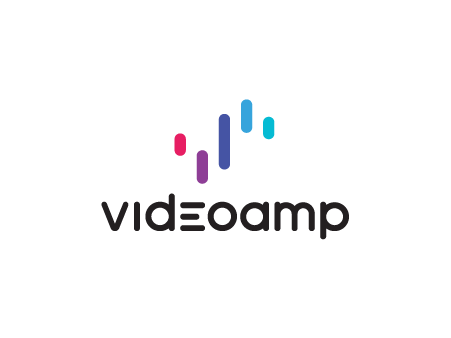The 2018 DMEXCO Buzz: The New Age of TV and Digital Unification in Europe

It’s trendy to say a conference is losing its value, productivity, attendance, or innovation. Cannes Lions has been under scrutiny and some have been quick to put DMEXCO in the same bucket. But key trends this year brought new excitement to DMEXCO. We will touch on them this post and how they relate to our mission to unify the measurement, planning, and optimization of linear TV, Connected TV / OTT, and digital video advertising.
- Consolidation & Fragmentation: We’ve all seen the rolling waves of acquisition while in parallel, viewership fragmentation and the variety of content continues to expand
- Innovation on Stage vs on the Trade Floor: Topics on the main stage had largely been seen before, but there is renewed, earnest interest in blockchain for adtech and “business outcomes” are what trade floor is all about
- GDPR and Data: the struggle continues to be real; some interesting post-mortems shined a light on key practices and progress
- Brand Safety: not a new topic, but hot nonetheless. Is there one all-encompassing definition?
- AI / Machine Learning: Buzzword alert; it’s back again but what’s the true progress being made here?
As we prepare to bring our innovative, GDPR compliant tech-stack to the European market, these learnings will remain top of mind. Let’s go a little deeper on each.
Consolidation & Fragmentation
Consolidation isn’t only for giant companies. Our minds jump to acquisitions like a telco + broadcaster that recently bought an SSP / DSP of its own! At DMEXCO this year, consolidation could be seen in “behind the scene” tech stacks that are streamlining the process to run “simple” campaigns in an efficient, cost-effective way, rather than working with multiple vendors per campaign. For VideoAmp, such integration means that media buyers and sellers alike can holistically measure, plan and optimize investment to benefit the global ecosystem, including consumers!
- Measure deduplicated reach and frequency across all TV and digital media to identify waste, reveal opportunity, and get actionable insights to perform better going forward
- Plan holistic, cross-screen campaigns for TV and digital using historical data and first-and third-party audiences, all on one easy-to-use platform
- Optimize impact and performance across digital video, CTV / OTT, and linear TV — including Scatter and Spot TV — with people-based, advanced audiences
As fragmentation of viewership continues, the need for a streamlined tech stack will increase to truly understand a campaign’s impact across all media.
Innovation on Stage vs. Innovation on the Floor
In case you didn’t make it from the expo floor to the main stages, let’s start by saying they were a prime example of simplistic yet beautiful German design. The topics weren’t new yet still informative, such as an exciting proof of concept for us that came through in a keynote speech by Max Conze, CEO of Dyson. Max called out the need to be able to scale relevant, people-based advertising across all screens and then measure meaningfully to identify real business outcomes across all screens.
Max if you’re reading this, let’s chat! This is the kind of data-driven innovation we are working on. It’s not as flashy as AI, but it’s a pressing business need and it takes an entirely new tech stack to make it happen. The floor was full of meetings connecting the dots in these tech stack’s needs between publishers, martech, adtech, data providers and more. It will be a race to create these stacks in the new GDPR environment.
GDPR & Privacy-Compliant Consumer Data
The European Union officially adopted the General Data Protection Regulation, on April 27, 2016, but the date most of us know is May 25, 2018, when GDPR went into effect. And the EU is not messing around; the fine is either 20M Euros or 4% of a company’s global revenue, whichever is higher. In an industry buoyed by pipes of data coursing through countless exchanges across unending inventory, this is a huge challenge for all of us to support.
- At what level is consumer consent enough?
- Do you have to check on your 3rd party partner’s data consent?
- Or do they alone own the liability?
Despite having two year’s time between the adoption and enactment of GDPR, some companies are still struggling to meet or even define “full compliance” with this new regulation. This fact, coupled with stateside grappling with the California Consumer Privacy Act, made the topic feel a bit under-represented on the main stage this year. We expect a few companies to take the mic next year and claim to have mastered GDPR.
Brand Safety
An ongoing topic in the industry, brand safety has expanded far beyond controversial or undesirable content, or fraudulent traffic. It has become an umbrella term for a broad spectrum of a brand’s safety needs and requirements for inventory compliance. This ranges from viewability to frequency, content matching, data collection, content appropriateness, and contextual alignment. Expectations and standards are once again on the rise.
AI / Machine Learning:
Taking Start-Up Village by storm, AI and machine learning technologies got a lot of buzz this year. From content recognition to messaging optimization, AI machines aren’t yet replacing human beings (as seen in dystopian movies), but their abilities are crucial to remaining competitive in the market. Already, they are reducing costs at processing rates that mere mortals can never achieve.
What This Means For VideoAmp
In a post-GDPR EU, VideoAmp is able to make more concrete plans for our business and product strategy in the region. We spent a lot of time with our fellow RTL Group portfolio companies this year. We are gearing up for some exciting launches in early 2019 that will leverage our unified approach to TV and digital to drive superior marketing outcomes for brand advertisers in Europe.
